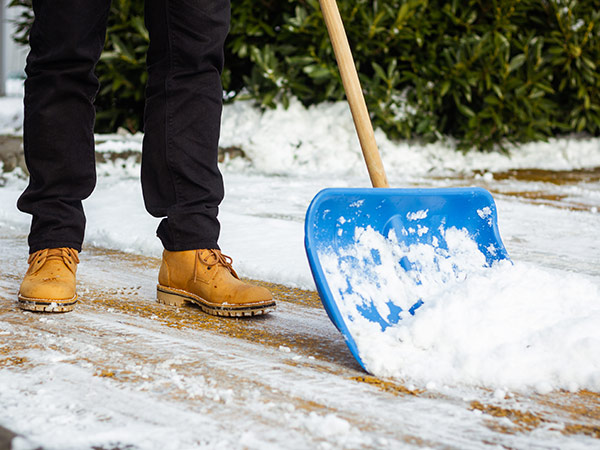

De-icing Your Walkways: Tips and Tricks
We may not get many ice days here in the McCoy’s states, but we learned last year to be prepared. If your driveway froze over last February, you might have found that it turned into your own personal ice rink and just walking to your mailbox became an arctic adventure. To prevent slips and falls, proper application of de-icing salt or a DIY mixture can help melt ice and provide traction.


De-icing Salt
De-icing salt is used by many in cold climates to make roadways safe for travel. A layer of a de-icing salt will lower the freezing point of water from 32°F to closer to 5°F. Since the ice requires a lower temperature to freeze, snow or ice accumulation will melt and not stick to the pavement creating a slushy brine of salt and melted ice.
There are a few different types and forms of de-icers. The most common, effective, and economical type is a rock salt made with sodium chloride. It is much like table salt, only in a larger crystal form. There are other forms of chloride and non-chloride de-icers that come in pellets, liquid, salt, and flakes.
No matter what type of de-icing salt you choose, it’s important to be aware of its impacts on your home. Large amounts become corrosive to driveways and walkways and harmful to plants and pets. It’s very important to follow safety instructions when using any de-icing product.

Application and Tips
- To minimize the amount of salt you use, only apply it to high foot-traffic areas like your front steps and your driveway. This will help minimize the unwanted effects of de-icing salt.
- Spread the salt in a thin, even layer that spaces out the salt granules instead of leaving piles. This ensures the entire area is covered and the salt is not clumped together.
- Start early before most of the accumulation starts so you can prevent ice from forming in the first place.

- Shovel any snow away before salting. The ice will melt faster when the salt isn’t melting a lot of snow first.
- Wash your hands and wipe off your shoes afterwards. The salt could be a mild skin irritant and could harm your pet if tracked into the house.
- Keep pets away from the salt as it could be harmful if ingested.
- Store the salt in a dry place to keep it from melting in the bag before you need it.
DIY Options
3 Ways to Help Melt Ice
- Kosher, or coarse salt, or table salt are a finer grind, but they work the same way as de-icing salts as they are all sodium. Apply it in a thin and even layer. High concentrations of table salt will still cause harm to plants and pets if used incorrectly.
- Beet juice mixed in a solution of salt water will help to melt ice but will not work as fast as salt. The solution should be about 80% salt water and 20% beet juice. This is a good DIY option if you’re concerned about plants and pets as the lower salt content reduces risk. Beet juice will leave stains on concrete and stone, so be sure to wash off the mixture as soon as you can.
- Wood ash from your fireplace will help to melt ice. Be aware though, it does create a dark and messy sludge.
2 Ways to Add Traction
- Cat litter is an easy option to add some traction to a slippery walkway along with your preferred method of de-icer. However, cat litter is designed to form clumps when wet, so be prepared to shovel it away.
- Sand adds traction to walkways and creates less of a clumpy mess than cat litter.
De-ice at McCoy's
Always play it safe when weather conditions turn icy. Be prepared with your preferred method of de-icer and start early. McCoy’s carries all you need for melting ice and to keep your walkways safe this winter including sodium chloride rock salt. Get ready by shopping online or in store today.
